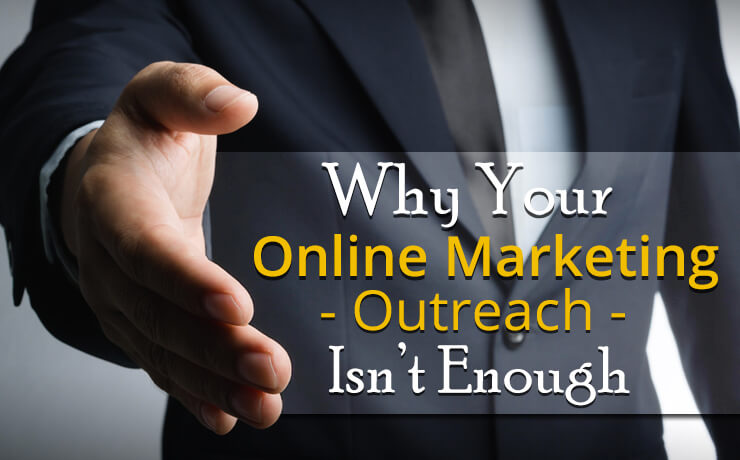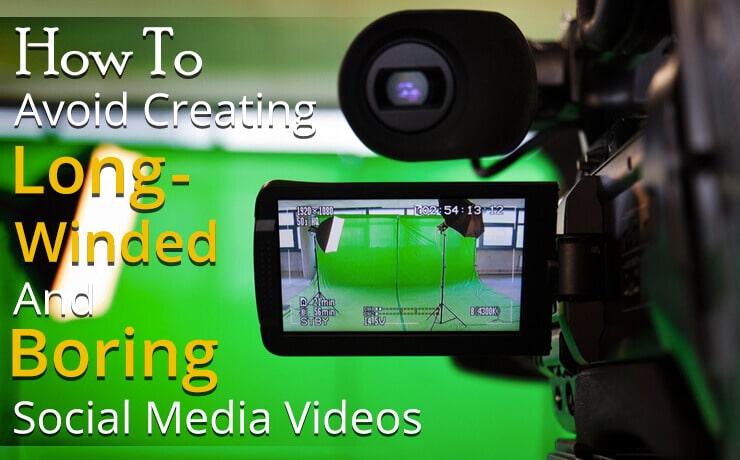Why Your Online Marketing Outreach Isn’t Enough

SmartSites

Even though a good online marketing strategy is still important, only advertising online isn’t enough. Even worse, some businesses think having a Facebook page is all they need to reach customers. However, limiting yourself to just one social media platform sets you up for a failure scenario. The average click-through rate for Facebook ads is less than 1 percent. While the results are still reasonably successful for most people, Facebook shouldn’t be your only strategy.
If you want to compete in a digital world, you do need an online presence, but there are many reasons you shouldn’t throw every advertising dollar you have into online marketing. Not only are some online methods ineffective, but when you put all your efforts into building social media followers, you don’t own that resource. The platform can take it away anytime or charge you to reach those followers — as Facebook is already doing.
While you can pay for targeted ads on some social media sites, figuring out how to reach a specific audience through tactics such as search engine optimization isn’t nearly as cut and dried. Response from consumers is difficult to gauge, and you can wind up spending a lot of money on advertising without seeing any payoff at all.
Don’t worry, though. There are a few ways to balance your marketing budget and efforts to ensure you get the best results possible. Often, success in marketing is just a matter of diversifying your efforts and studying what works and doesn’t work for your particular brand.
Combine Online and Offline Marketing
One solution is to combine online and offline marketing, creating a campaign that reaches people where they live and then takes the conversation to social media. This effective strategy allows your most ardent customers to share what your brand is doing with their family and friends. One study showed around 40 percent of people buy online after first seeing an offline mention about the item. Try to get your brand in front of consumers in multiple ways for maximum impact.
Figure out ways to reach out to consumers offline. Who is your target audience, and how can you reach them? For example, if you own a small boutique clothing store, you might put ads in your local free weekly giveaway paper, send postcards to various households in your area and even have a presence at a local festival. Through those physical marketing materials, you can share a code for a discount if customers buy online.
Focus on Content
Reaching out on social media isn’t enough if you don’t have something of value to share with readers. Content drives results for most businesses. Instead of posting just for the sake of putting something out there, you need to offer your readers something of value when they interact and come to your site. Strong content also gives you something to share on social media, as well as tell people about when they visit your store. For example, if a customer purchases a new gadget, be sure to mention there is a detailed video tutorial on your website.
Paid search isn’t nearly as effective as content marketing, which results in three times as many leads. Even if you pay a content professional to write the content for you, the cost is minimal, especially when you factor in that you can use that content to drive leads for many months, if not years.
Use Advances in Visual Marketing
Perhaps you moved away from physical advertising because it was costly and seemed too repetitive. However, today’s visual advertising is an entirely new animal. Printers can now create wraps for nearly anything you might imagine. Instead of buying a billboard or placing a sign in your store window, you can wrap an outdoor bench or decorate a water fountain. There are many creative ways to use vinyl signs.
Grow Your Local Audience
Even though there are ways to reach a local target audience on social media, you won’t be able to reach everyone. For example, let’s say you want to reach John Consumer in a neighborhood in your area. You set up a Facebook ad and target people in his age range, neighborhood and with his exact demographics. Unfortunately, John isn’t even on Facebook. He distrusts social media, and rarely uses the Internet. Even his smartphone is mainly to text his family and friends.
You aren’t going to reach everyone through social media, so you must use other methods. Door hangers, mailers, attending local festivals and word of mouth are all worthwhile endeavors that help grow your reach.
Encourage Webrooming and Showrooming
In recent years, consumers have become comfortable interacting with brands over multiple channels. Webrooming is when a consumer searches online to learn more about a product or retailer, and then goes to a physical store to buy that item. Showrooming is the same practice in reverse — the person visits the store, gathers info and then completes their purchase online.
Encourage customers to shop the way they want by allowing in-store returns for online purchases, or letting them exchange an item from the comfort of their armchair without penalties. The trend to gather info both online and offline and purchase from either medium ties in nicely with a dual online/offline marketing strategy that seamlessly integrates both worlds.
Include TV and Radio
Many small businesses don’t add television and radio advertising to their marketing radar, because these media can be quite expensive. However, there are ways around the high costs, and these two forms of advertising are still highly effective in reaching new leads.
Studies estimate 93 percent of adults listen to at least some radio every week. People commuting to and from work listen to the radios in their cars, making them captive audience members. For every $1 they spend on radio advertising, businesses see a $6 return on investment.
You don’t have to spend a fortune to have a big impact. Try a 30-second ad to start. Seek talk shows looking for speakers and go on as a guest. For television, contact local cable networks and get their advertising rates. The rates may be much less than you’d expect.
Spread Efforts Across Different Channels
As with most aspects of money management, diversification is smart. Don’t throw all your advertising dollars into one social media platform or only into search engine placement. Instead, budget your marketing dollars across different media and both online and offline efforts.
With a little planning and a lot of tracking, you’ll soon figure out which techniques work best for your brand and be able to repeat successful campaigns and cut unsuccessful ones. Reaching people via different channels is just smart business sense and will help grow your customer base faster than social media alone.
This guest post is wrriten by Lexie Lu, a freelance designer and blogger. She owns the design blog Design Roast, and you can find her work on Manta, CreativeBloq and Marketo. To keep up with Lexie, check out her Twitter @lexieludesigner.
 Free
Consultation
Free
Consultation Free
Google Ads Audit
Free
Google Ads Audit







